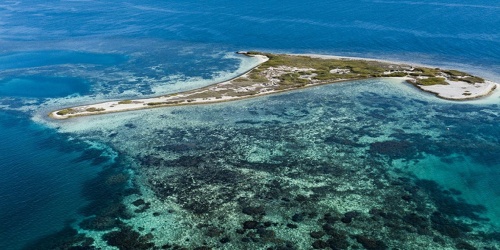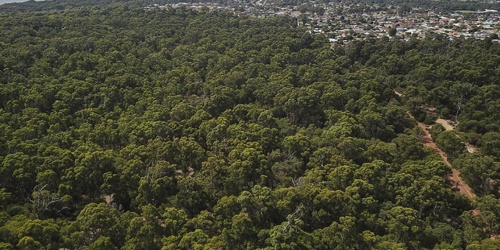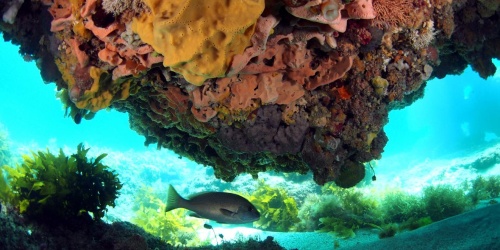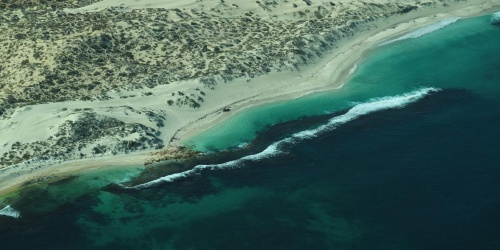Plan for Our Parks
The State Government has announced a plan to create five million hectares of new national and marine parks and reserves across Western Australia.
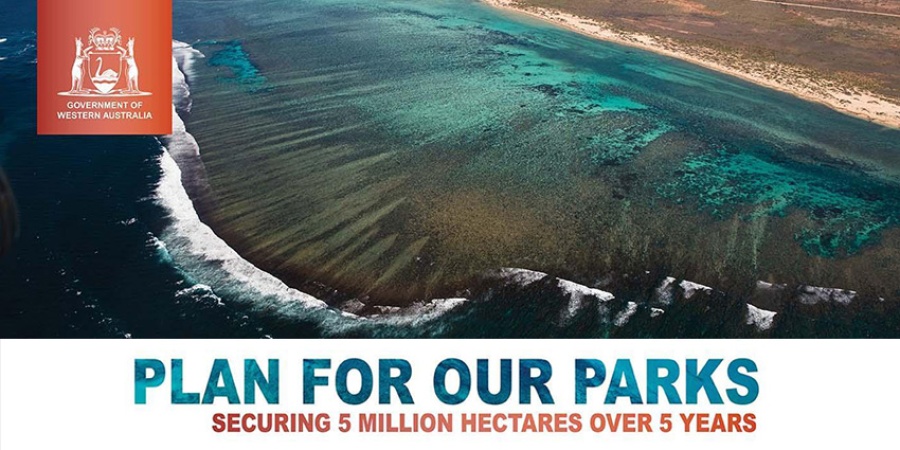
In 2019, the State Government announced a plan to create five million hectares of new national and marine parks and conservation reserves across Western Australia.
The Plan for Our Parks will see new and expanded parks from the Kimberley in the north, across WA’s Rangelands, through population centres in Perth and Bunbury, to our south-west forests and along our southern coastline. This is creating more opportunities for nature-based and cultural tourism, provides enhanced biodiversity conservation and builds on Aboriginal joint management throughout Western Australia.
The plan will deliver on a number of existing strategic priorities and commitments, and create new, visionary opportunities for parks and reserves. An additional one million hectares has been identified to ensure the five-million-hectare target is met.
News
- Have your say on proposed world-class South Coast Marine Park
- Halfway milestone for WA's Plan for our Parks initiative
- New and expanded national parks in WA's Mid West-Gascoyne
- State Budget delivers increased funding for national parks and reserves
- McGowan Government unveils visionary conservation plan
Working with traditional owners
The expansion plan will build on the State Government’s successful Aboriginal Ranger Program by providing more opportunities for traditional owners to jointly manage country. The creation of new parks and reserves will be subject to endorsement from traditional owners and the finalisation of Indigenous Land Use Agreements.
Consultation
The State Government is continuing a comprehensive consultation process for Plan for Our Parks with traditional owners; pastoral, fishing and mining industry; conservation organisations; interest holders and all levels of government. Through the consultation process, specific proposals, boundaries and management approaches have been developed.
FAQs
What is Plan for Our Parks?
In 2019, the State Government announced a plan to create five million hectares of new national and marine parks and conservation reserves across Western Australia over the next five years, increasing the conservation estate by 20 per cent. A total of 18 opportunity areas was identified.
Plan for Our Parks is creating new and expanded parks from the Kimberley in the north, across WA’s Midwest and Goldfields, through areas from Perth to Bunbury, to the south-west forests and a potential new marine park on the southern coastline. Areas that have been identified in the plan have high conservation and cultural heritage values, and pave the way for enhanced tourism and Aboriginal joint management.
Plan for Our Parks is a whole-of-Government initiative overseen by a multiagency Directors General Steering Group and the Ministers for Environment, Aboriginal Affairs and Mines and Petroleum. The establishment of new marine parks will also require approval by the Minister for Fisheries.
How were the 18 opportunities for new parks and reserves determined?
The opportunities for new national parks, marine parks and other conservation reserves under Plan for Our Parks will contribute to the National Reserve System and the development of a comprehensive, adequate and representative reserve system for Western Australia.
Plan for Our Parks addresses the findings and recommendations of previous enquiries into the establishment and management of marine parks and reserves and former pastoral leases. This includes the 1994 report on A Representative Marine Reserve System for Western Australia, the 2016 Auditor General’s report into the Management of Marine Parks and Reserves, which identified the south coast as a gap in the marine reserve network, and the 2010 Economics and Industry Standing Committee inquiry into the management of former pastoral leases. These pastoral leases were purchased by the State Government for conservation over the past two decades but remained unreserved. Plan for Our Parks also builds on decades of relationships with Aboriginal people and approaches to the Government from traditional owner groups with aspirations for the creation, joint vesting and joint management of new parks and reserves.
Plan for Our Parks considers biodiversity and other values, native title and mineral prospectivity of the areas to be reserved and the practicalities for long-term management. Plan for Our Parks brings all of this together at a statewide scale.
A number of submissions to Plan for Our Parks were received from stakeholders and interested parties some of which provided recommendations for particular areas to be included for reservation under Plan for Our Parks.
How will the management of the parks be funded?
The State Government has already committed funding towards delivery of some proposals and will further invest into the joint management of other proposals under Plan for Our Parks. This will enable more focussed management of the new conservation areas, including the provision of jobs.
How will the Government work with traditional owners to implement Plan for Our Parks?
The State Government will work together with traditional owners and other stakeholders to develop and implement Plan for Our Parks. The reservation of marine and national parks generally requires the consent of native title holders by way of an Indigenous Land Use Agreement (ILUA) in accordance with the Commonwealth Native Title Act 1993. The State Government will pursue successful resolution of outstanding relevant native title consent as a key element for finalisation of additions to the conservation estate.
How will Plan for Our Parks support Aboriginal employment?
Plan for Our Parks will provide long-term employment, and joint management outcomes supporting Aboriginal peoples’ desire to manage country and respond to the growing demand for on-country jobs for Aboriginal rangers. It is designed to complement other initiatives, such as the successful Aboriginal Ranger Program, which was established in 2017 to protect the environment and leverage the social and economic benefits that employment provides in regional and remote Western Australia.
Will the new parks and reserves have any impact on mining and exploration, fishing and forestry?
Relevant industry and resource-related matters are being considered, including commercial and recreational fishing and other industries that support regional growth and employment. The Government has consulted extensively across the resource and industry sectors, including legal interest holders, to address potential impacts with respect to the original 18 opportunity areas and will undertake a similar process for 11 newly identified additional areas.
All park proposals were assessed by the Department of Mines, Industry Regulation and Safety (DMIRS) for mineral and petroleum prospectivity and all relevant mining tenement and petroleum title holders were contacted by DMIRS for comment (both applicants and granted titles). Numerous meetings were held with mining companies.
The establishment of a marine park on the south coast includes consultation with the representative fishing sector bodies to ensure fishing interests are recognised and considered, and that opportunities for a marine park are identified that enable continued recreational and commercial uses. This consultation has been deferred until September 2020 given COVID-19 and the current industry settings. Fishing interests will be considered along with conservation interests and other uses at the appropriate time to determine the marine reserve boundaries and internal zoning schemes.
How were the original 18 opportunity areas refined?
Consultation for the original 18 opportunity areas has helped shape the refinement of boundary and tenure arrangements. A flexible approach was taken, with operating mine sites and mining leases excluded from reserve proposals as well as mining tenements where there was potential for significant employment outcomes. Boundary amendments were also made to exclude areas subject to State Agreement Acts at the request of the State Agreement party. Some of the reserve proposals raised in submissions have been addressed in the amendments to the original 18 opportunity areas.
What are the additional areas?
An additional one million hectares has been identified as a risk management strategy to ensure the five-million-hectare target is met by February 2024. They provide flexibility knowing that for a variety of reasons it is possible that not all the initially identified parks will be created.
How were the additional areas identified?
In identifying potential additional areas, consideration was given to development of a comprehensive, adequate and representative reserve system; known biodiversity, cultural, tourism and other values; likelihood of achieving an ILUA; resource and other considerations; practical reserve design principles and cost. Areas identified in stakeholder submissions and Government priorities were also considered.
The additional areas will be progressed for reservation alongside the original 18 opportunity areas.
How were areas nominated for reservation in submissions to Plan for Our Parks treated?
Stakeholder submissions nominated a number of areas for inclusion into Plan for Our Parks for addition to the conservation reserve system. The focus in Plan for Our Parks has been on reserving areas in the rangelands that were purchased for conservation or other government priorities. It will be possible to meet the five-million-hectare target from these areas. Plan for Our Parks does not preclude other areas from being brought into the conservation estate. Other mechanisms, such as the Forest Management Plan, environmental offsets or other government decisions may result in areas being included into the conservation reserve system concurrently with Plan for Our Parks. Importantly, some of the proposals raised in submissions have been addressed in the amendments to the original 18 opportunity areas, and some have been considered in the one million hectares of additional areas.
What is the expected timeline for implementation of Plan for Our Parks?
An initial consultation process with traditional owners, key stakeholders and interest holders for the original 18 opportunity areas has been completed, and revised proposals have been approved by the State Government. The Government will now commence the process of negotiating ILUAs with traditional owners, where agreed by the traditional owners. A consultation process, similar to the original 18 opportunity areas, is also underway for the additional areas and is expected to be completed by August 2020. The reservation of new parks and reserves, including additional areas, will be completed by 2024, after ILUA negotiations, management planning and joint management arrangements have been completed.
How is Plan for Our Parks affected by the COVID-19 coronavirus pandemic?
The State Government is continuing to deliver Plan for Our Parks and is adhering to social distancing and travel restrictions through the consultation process.
